Galli Uhren Bijouterie AG
Theaterstrasse 16, on Bellevue
CH-8001 Zurich
Tel: +41 44 262 04 10
Fax: +41 44 252 49 96

How did the Speedmaster Moonwatch actually become the legendary model it is today? We take a look at the most important stages in the evolution of the chronograph.

2021 is the year in which another generation of the legendary Speedmaster Moonwatch from Omega will be launched. Despite the technological update, the proven design of the Moonwatch has been retained almost unchanged – because that is what loyal fans of the chronograph pay particular attention to.
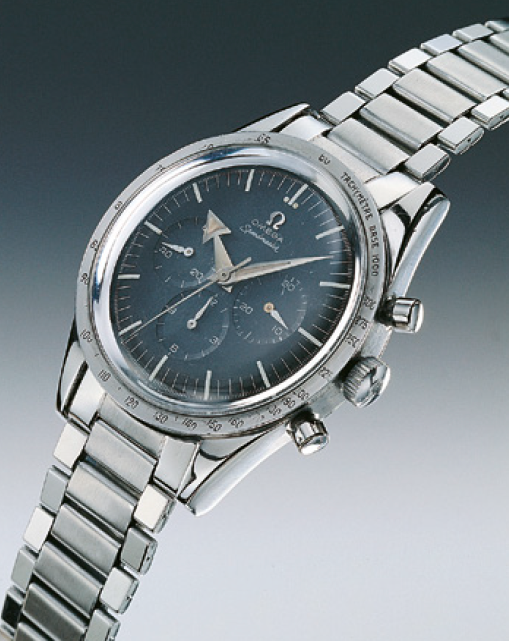
Long before it became the legendary Moonwatch, the Omega Speedmaster was intended to impress as a robust chronograph in car races from 1957 onwards. Easy readability and a waterproof case were a matter of course. On the other hand, the model was a pioneer in terms of design, as it was the world’s first timepiece with a tachymeter scale on the bezel – previously, this had always been located on the dial.
The first experiences of manned space flight quickly revealed the need for reliable and robust chronographs. Towards the end of the Mercury programme, NASA defined its requirements in a specific request to various renowned watch manufacturers around the world, to which, however, only four manufactures responded at all:

As Hamilton could only offer pocket watches with the appropriate certification, it was not considered in the further course of the tender, as NASA absolutely needed a wrist chronograph for astronauts.
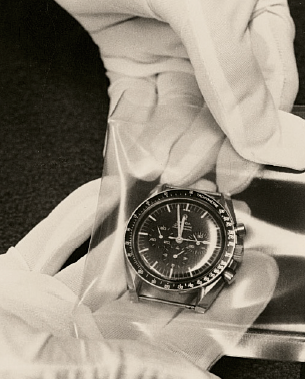
In the specific requirement for the test series, NASA asked the three remaining manufacturers to submit corresponding wristwatch chronographs, which then had to prove themselves under the sometimes extreme requirements. These very intensive and demanding tests included, among other things, tests in a vacuum, vibration tests, tests on temperature resistance and resistance to shocks.
For the temperature test, the watches were exposed to a heat of 71° to 93° Celsius for two days and then shock-frozen to minus 18° Celsius. The chronographs then had to withstand a further heating to 93°C in a vacuum chamber. The temperature test was completed by heating them up again to 70°C and then immediately cooling them down to minus 18°C. This final test was carried out fifteen times. This last test was carried out fifteen times in a row. Temperature resistance was not the only test category, however, so the strains on the watches were far from over. The results were sobering for some manufacturers.
The cooperation between Rolex and NASA was to be established with the so-called pre-Daytona model the Cosmograf chronograph (ref. 6238), which was equipped with the Valjoux 72 movement. During the relative humidity test it stopped completely twice and during the high temperature test it showed a catastrophic material failure of the second hand. This bent in such a way that the other hands were blocked. This marked the end of the collaboration between Rolex and NASA on this project, as no further tests were carried out on the models.
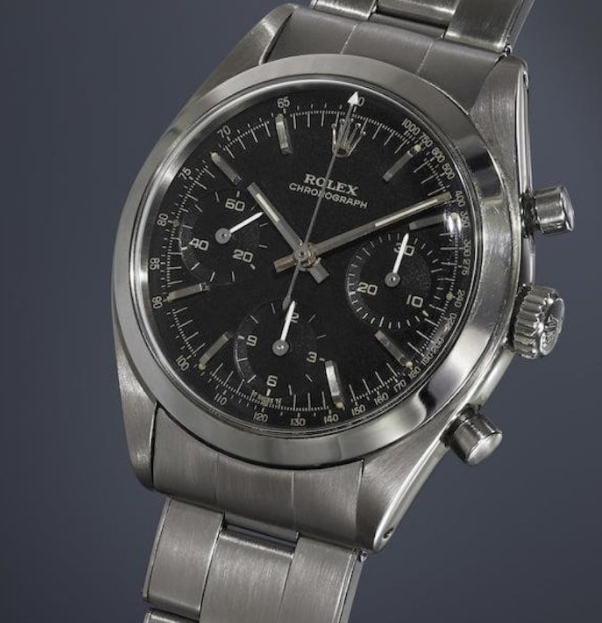
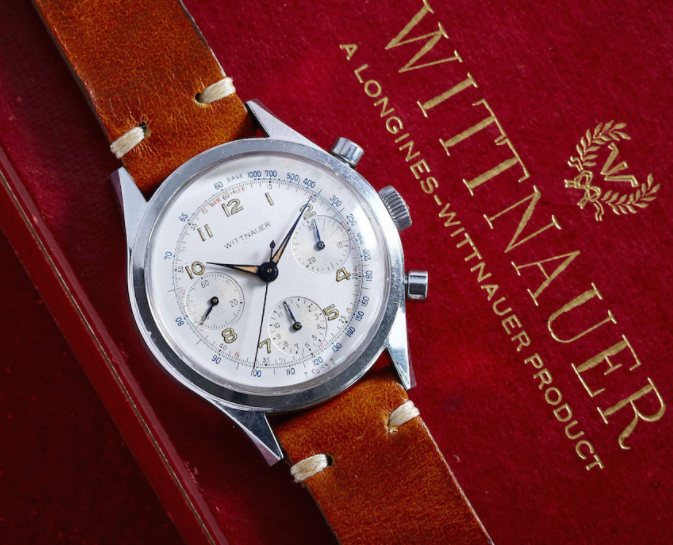
Longines, too, had to pull out in view of the test results, as the glass of one watch bent during the tests of the high-temperature properties. A second watch failed the decompression test in the same way. The Longines-Wittnauer chronographs were thus eliminated from the competition.
In view of the sometimes extreme requirements of NASA, Omega sent out examples of the third generation of Speedmaster chronographs (ref. 105.003). Problems became apparent during decompression and acceleration tests, which showed that the movement was 21 minutes ahead and 15 minutes behind respectively. Another problem was the luminous material of the dial, which was literally destroyed. Although this manufacturer’s watches were not able to meet all the requirements perfectly either, the chronographs survived all the tests overall and their function was rated as satisfactory. As a result, on 1 March 1965, the Omega Speedmaster was awarded the rating “flightworthy for all manned space missions” by NASA.
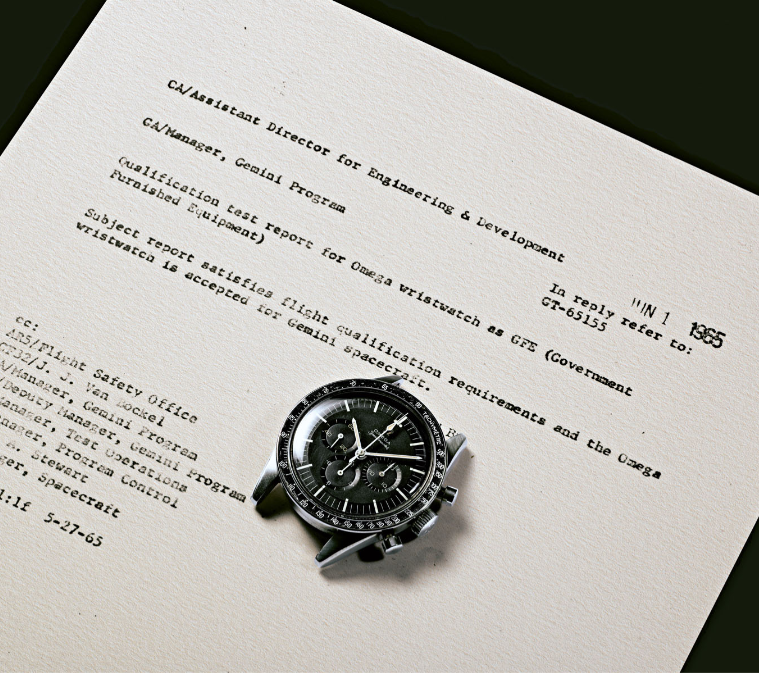
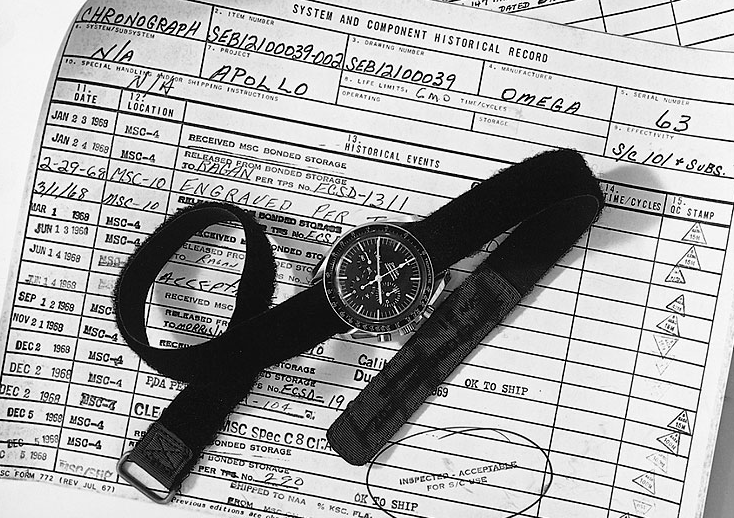
Just three weeks later, the Speedmaster made its maiden flight into space on the wrists of Virgil “Gus” Grissom and John Young on the Gemini 3 mission.

The first US astronaut to leave his space capsule for a 23-minute spacewalk was Edward White. Naturally, he wore his reliable Omega Speedmaster on his wrist, which had undergone a new qualification by NASA especially for this purpose.

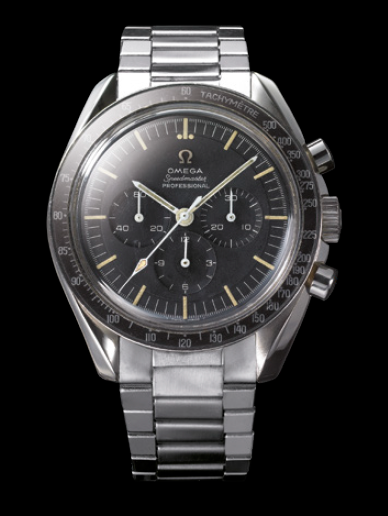
The moon landings announced by President John F. Kennedy in his famous speech for the end of the decade required an update of the reliable Speedmaster. Thus the actual Moonwatch style was born, for which Omega and NASA cooperated closely. These new Speedmaster models, designated reference 105.012 and 145.012 respectively, featured an asymmetrical case and twisted lugs, providing better protection for the crown and pushers. The additional designation “Professional” was printed on the dial for the first time. It was these Moonwacth Professional models that reached the moon together with the astronauts of Apollo 11 and were the first watches ever to be worn there.
The success of the Apollo 11 mission was one of the most important scientific breakthroughs in history. On 21 July 1969, Neil Armstrong and Edwin “Buzz” Aldrin became the first humans to set foot on the moon. Interestingly, only Aldrin wore his Moonwatch Professional, as Armstrong had left his chronograph on board the space shuttle Eagle. The moon landing certainly represents a special milestone in the collaboration between Omega and NASA – and also marks the triumph of innovation, courage and unprecedented expertise.
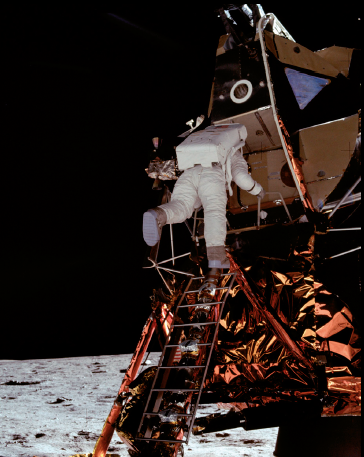
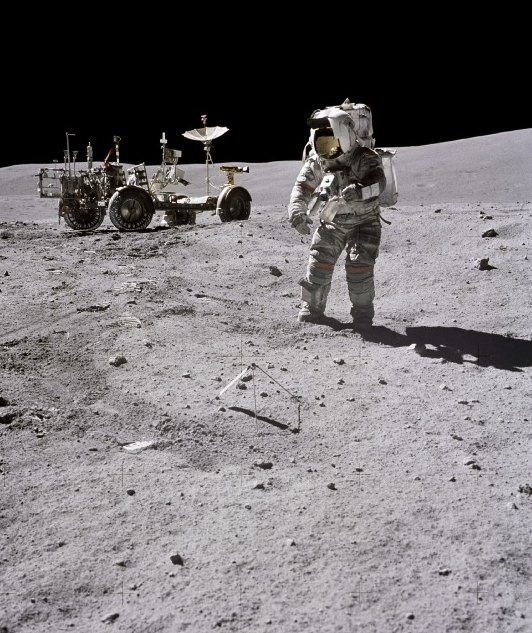
The Omega Speedmaster Moonwatch was present at all the other successful moon landings of Apollo 12, 14, 15, 16 and 17. However, the Omega literally saved the day for the crew of Apollo 13. After the ship lost many important systems due to an explosion on board, a regular moon landing was out of the question. Instead, it was only a matter of getting the astronauts back to Earth alive. The Omega Speedmaster was crucial for this, as it was indispensable for the precise manoeuvres and engine firings that had to be carried out to the second.
But even after the lunar programme ended, Speedmaster chronographs continued to serve reliably in space. Since the historic docking manoeuvre between a Soviet Soyuz capsule and an American Apollo spacecraft in 1975, the Moonwatch has become the standard chronograph of the world’s most important space agencies. Incidentally, in 1974, a new Omega Speedmaster with a steel bracelet retailed at 520 Swiss francs.
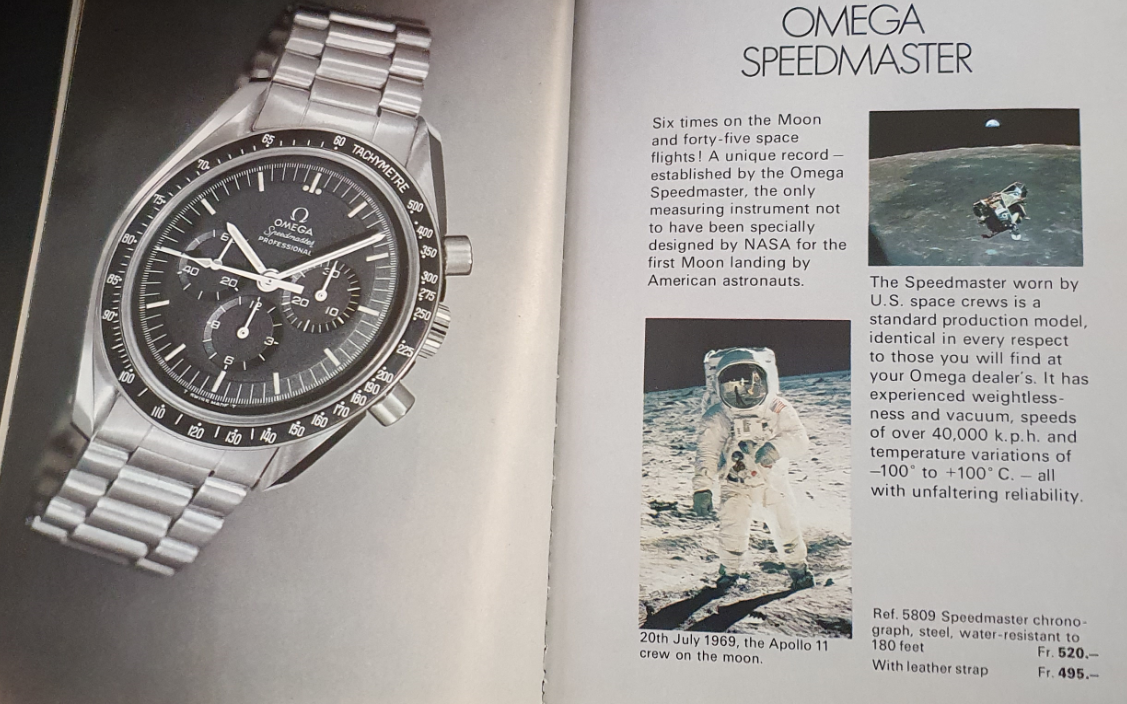
Let’s take a leap into the present day. The successful Speedmaster Moonwatch was due for another makeover to integrate current developments in technology into the proven design concept. The latter is very important for fans of this model, because the classic design should not be changed, or only very slightly, if possible. Accordingly, it took a whole four years to develop the current calibre of the Moonwatch family.

A special feature is the new master chronometer certification according to the METAS standard. For this purpose, details such as the power reserve, magnetic resistance and chronometric performance were once again improved for the calibre 3861, which will be presented in 2019. Added to this are technical innovations in the movement itself, such as the Co-Axial escapement or the Si14 silicon balance spring, which make it possible to pass the eight Master Chronometer tests in an exemplary manner. This fourth generation of the Moonwatch (ref. ST 105.012) was inspired by the original models of the Apollo 11 mission of 1969 and is very popular among collectors.
By the way, resistance to magnetic influences is not a mere gimmick that has no relevance for ordinary people. Rather, the number and strength of the magnetic fields to which we are exposed every day by mobile phones, computers, consumer electronics and other electrical devices are increasing. Such magnetic fields can certainly have a negative influence on chronometers. A Moonwatch Professional of calibre 3861 is so well protected against magnetism that it can still display the exact time even under the influence of extremely strong magnetic fields of an average MRI scanner up to an intensity of 15,000 gauss.